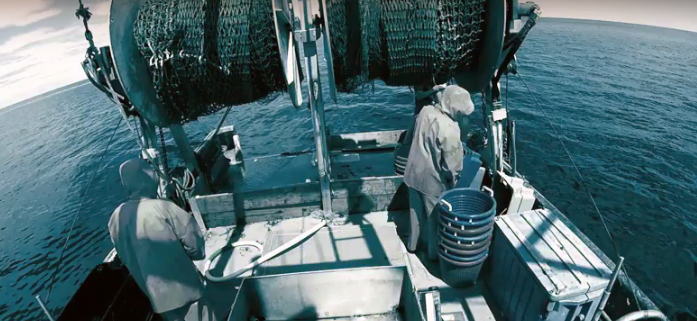
At-sea monitoring of all fishing trips (100% monitoring) is required as part of the Council’s groundfish trawl catch share program in order to account for discards. Currently, this monitoring is conducted by human observers.
From 2012 to 2018, the National Marine Fisheries Service (NMFS) studied the use of electronic monitoring (EM) to examine its potential use in monitoring individual fishing quotas under the catch share program, particularly to document at-sea discard events. EM is the use of video technology to track catches and discards, it should not be confused with vessel monitoring systems, which track the location of fishing vessels.
The Council recommended that EM be an option to provide the industry with a potentially less expensive and more flexible alternative to human observers. Under the program, vessel owners could apply for an exemption to the observer requirement, and if approved by NMFS, could use EM to document allowable discards.
Current activities
In 2019 NMFS published regulations to implement the electronic monitoring program for the whiting and fixed gear fisheries operating in the trawl catch share program. Full implementation of the program has been delayed until January 1, 2022. In early 2021, NMFS expects to publish a proposed rule to implement the bottom trawl and nonwhiting midwater trawl fisheries portion of the electronic monitoring regulations. The Council will continue to work with NMFS and the industry to examine ways to increase efficiencies and lower industry costs while maintaining the integrity and accountability of the catch share program.
Background
The trawl catch share program, which began in 2011, requires 100% monitoring of all trips. Before the program was put in place, 20% of trips were monitored with observers through the NMFS West Coast Groundfish Observer Program; the observers were paid by the Federal government. The Council considered electronic monitoring while planning the catch share program, but opted to continue using observers and increase the observation level to 100%. Under the program, vessel owners must pay private companies to observe all trips. When the catch share program was put in place, NMFS agreed to pay for a portion of the observer costs to help the fleet through the adjustment period. In September 2015, the industry was required to pay the full cost.
The requirement to pay for observers is one of the most expensive compliance costs associated with participation in the catch share program. All vessels are billed for observers on a per-day basis, so observer costs are the same for both small and large vessels. Because vessels are billed per day both for at-sea and for standby time during a trip, vessels may incur higher costs for standing down due to bad weather; therefore, the observer fee system can put pressure on vessels to fish in unsafe conditions.
Although information collected by observers for catch share monitoring (mainly accounting for discarded fish) could be collected through electronic monitoring, cameras cannot completely fulfill all scientific monitoring needs. Therefore, observers will still be necessary to collect biological samples to support stock assessments and other important fishery-dependent information, such as interactions with protected species.